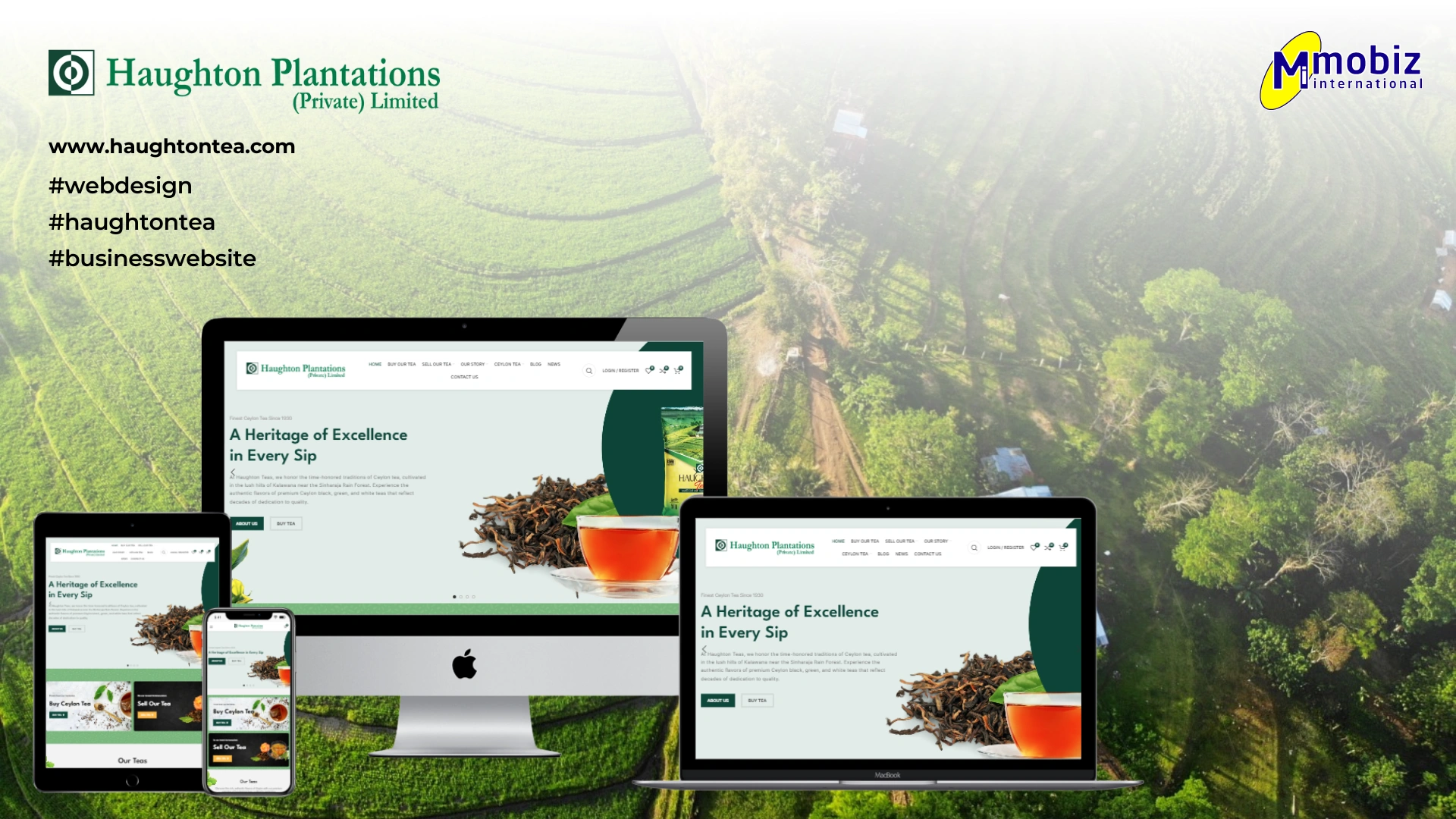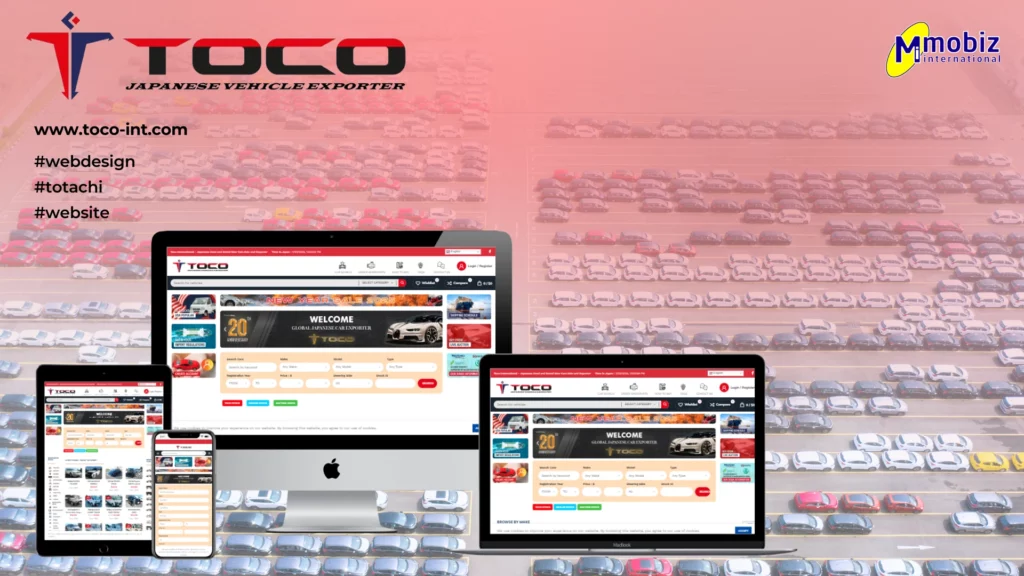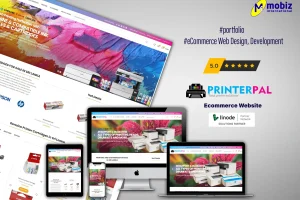
In today’s digital age, e-commerce has transformed from a convenient option to an essential business strategy for companies across Sri Lanka. As the country’s digital economy continues to flourish, with the e-commerce market projected to reach US$2,828.3 million by 2025 [1], understanding how e-commerce works is crucial for businesses looking to expand their online presence.
At Mobiz International, Sri Lanka’s premier web design and development agency, we’ve helped numerous businesses across Colombo, Kandy, Galle, and beyond establish successful online stores. This comprehensive guide explains the fundamentals of e-commerce and how your Sri Lankan business can harness its power in 2025.
What is E-Commerce?
E-commerce, short for electronic commerce, is the process of buying and selling products or services over the internet. It enables businesses to reach customers beyond geographical limitations and operate 24/7 without the constraints of traditional brick-and-mortar stores.
According to DesignRush, “E-commerce is the process of buying and selling commercial goods or services over the Internet. Through e-commerce, customers can visit online marketplaces using devices such as laptops, tablets, or smartphones and purchase products with electronic payments” [2].
For Sri Lankan businesses, e-commerce represents an opportunity to tap into both local and global markets, creating new revenue streams and enhancing customer experiences.
The Core E-Commerce Business Models
Before diving into how e-commerce works, it’s important to understand the different business models that exist in the online marketplace. Each model has unique characteristics that affect how your business operates and who you target.
The E-Commerce Process: How It Works
Now that we understand the different business models, let’s explore how e-commerce actually works. The e-commerce process typically involves the following key stages:
E-Commerce Website Development for Sri Lankan Businesses
Developing an effective e-commerce website requires careful planning and consideration of various technical and design elements. Here’s what Sri Lankan businesses should know about e-commerce website development:
Platform Selection
Choosing the right e-commerce platform is one of the most important decisions you’ll make when establishing your online store.
Popular E-Commerce Platforms:
- Custom-built solutions: Tailored specifically to your business needs
- Open-source platforms: Like Magento, WooCommerce, or PrestaShop
- Hosted solutions: Such as Shopify or BigCommerce
Considerations for Sri Lankan Businesses:
When selecting an e-commerce platform, consider factors such as:
- Local payment gateway integration capabilities
- Multi-currency and multi-language support
- Hosting location and loading speed for Sri Lankan users
- Customization options for local market needs
- Technical support availability in your time zone
At Mobiz International, we specialize in developing custom e-commerce solutions that address the specific needs of Sri Lankan businesses, with particular expertise in Joomla-based e-commerce systems.


Essential Features for Sri Lankan E-Commerce Websites
To succeed in the Sri Lankan market, your e-commerce website should include these key features:
Multilingual Support
Content in Sinhala, Tamil, and English to serve all major language groups in Sri Lanka
Multiple Payment Options
Integration with local payment gateways
Cash on delivery options for customers who prefer physical transactions
Mobile payment solutions popular in Sri Lanka
Mobile Optimization
Fully responsive design for the growing number of mobile shoppers in Sri Lanka
Touch-friendly interfaces and simplified mobile checkout
Localized Content
Pricing in Sri Lankan Rupees
Content that reflects local cultural nuances and shopping preferences
Location-based promotions and offers
Security Features
SSL certification for secure transactions
PCI DSS compliance for payment processing
Privacy measures that align with local regulations
Performance Optimization
Fast loading times even with varying internet speeds across different regions
Content delivery optimization for Sri Lankan users
Social Integration
Connection with social media platforms popular in Sri Lanka
Social sharing capabilities to leverage word-of-mouth marketing

Overcoming E-Commerce Challenges in Sri Lanka
While e-commerce offers tremendous opportunities, Sri Lankan businesses face several challenges that need to be addressed:
The Future of E-Commerce in Sri Lanka
The e-commerce landscape in Sri Lanka is evolving rapidly, with several trends shaping its future:
Mobile Commerce Growth
With smartphone penetration continuing to rise in Sri Lanka, mobile commerce is set to dominate the e-commerce landscape. Businesses should prioritize mobile optimization and consider developing dedicated mobile apps for enhanced user experience.
AI and Personalization
Artificial intelligence and machine learning are revolutionizing e-commerce by enabling personalized shopping experiences. According to research by DHL, “AI and machine learning are revolutionizing the e-commerce industry by providing deeper insights into customer behaviour and preferences” in Sri Lanka [5].
Social Commerce Expansion
Social media platforms are increasingly becoming shopping destinations in their own right. Sri Lankan businesses should explore social commerce opportunities on platforms popular with local consumers.
Sustainability Focus
Environmental consciousness is growing among Sri Lankan consumers, particularly in urban areas. E-commerce businesses that emphasize sustainable practices in their operations and messaging can gain a competitive edge.
Voice Commerce Emergence
As voice-activated devices become more common, voice commerce is emerging as a convenient shopping option. Forward-thinking businesses should begin optimizing for voice search and exploring voice commerce capabilities.
How Mobiz International Can Help Launch Your E-Commerce Success
As Sri Lanka’s leading web design and development agency, Mobiz International offers comprehensive e-commerce solutions tailored to the unique needs of local businesses:
Custom E-Commerce Website Development
Our team develops fully customized e-commerce platforms that are:
- Optimized for the Sri Lankan market
- Designed with local consumer preferences in mind
- Integrated with local payment gateways
- Built for optimal performance even with varying internet connectivity
E-Commerce Strategy Consulting
We provide strategic guidance to help your business:
- Choose the right e-commerce business model
- Identify target markets and customer segments
- Develop competitive pricing strategies
- Create effective marketing and customer acquisition plans
Technical Implementation and Support
Our technical services include:
- Secure platform development with robust encryption
- Payment gateway integration
- Inventory management system implementation
- Mobile optimization
- Ongoing technical support and maintenance
Digital Marketing for E-Commerce
Our digital marketing specialists can help your e-commerce business:
- Develop SEO strategies targeting Sri Lankan search patterns
- Create effective social media campaigns
- Implement email marketing automation
- Design PPC campaigns for customer acquisition
Analyze performance metrics and optimize for better results
Conclusion: Taking the First Step into E-Commerce
The e-commerce landscape offers tremendous opportunities for Sri Lankan businesses of all sizes. By understanding how e-commerce works and implementing the right strategies, you can expand your reach, increase sales, and build stronger customer relationships.
Whether you’re just starting your e-commerce journey or looking to optimize an existing online store, the key is to focus on creating exceptional customer experiences tailored to the unique needs and preferences of the Sri Lankan market.
Ready to transform your business with a powerful e-commerce presence? Contact Mobiz International today to discover how our tailored e-commerce solutions can help your Sri Lankan business thrive in the digital marketplace.
Mobiz International Pvt Ltd is a full-service web design and development company in Sri Lanka specializing in e-commerce solutions, responsive web design, SEO, mobile app development, and inclusive digital solutions for businesses of all sizes. Visit joomlasrilanka.com to learn more about our comprehensive services.


Sources:
eCommerceDB. “eCommerce Market Sri Lanka – Data & Trends.” https://ecommercedb.com/markets/lk/all
DesignRush. “How Does eCommerce Work? (2024).” https://www.designrush.com/agency/ecommerce/trends/how-does-ecommerce-work
Trade.gov. “Sri Lanka – eCommerce.” https://www.trade.gov/country-commercial-guides/sri-lanka-ecommerce
AfterShip. “eCommerce Statistics in Sri Lanka 2025.” https://www.aftership.com/ecommerce/statistics/regions/lk
DHL. “Top 5 e-commerce trends in 2024 for Sri Lankan businesses.” https://www.dhl.com/discover/en-lk/e-commerce-advice/e-commerce-trends/top-5-ecommerce-trends-in-2024
DesignRush. “eCommerce Analytics Explained (2025).” https://www.designrush.com/agency/ecommerce/trends/ecommerce-analytics




